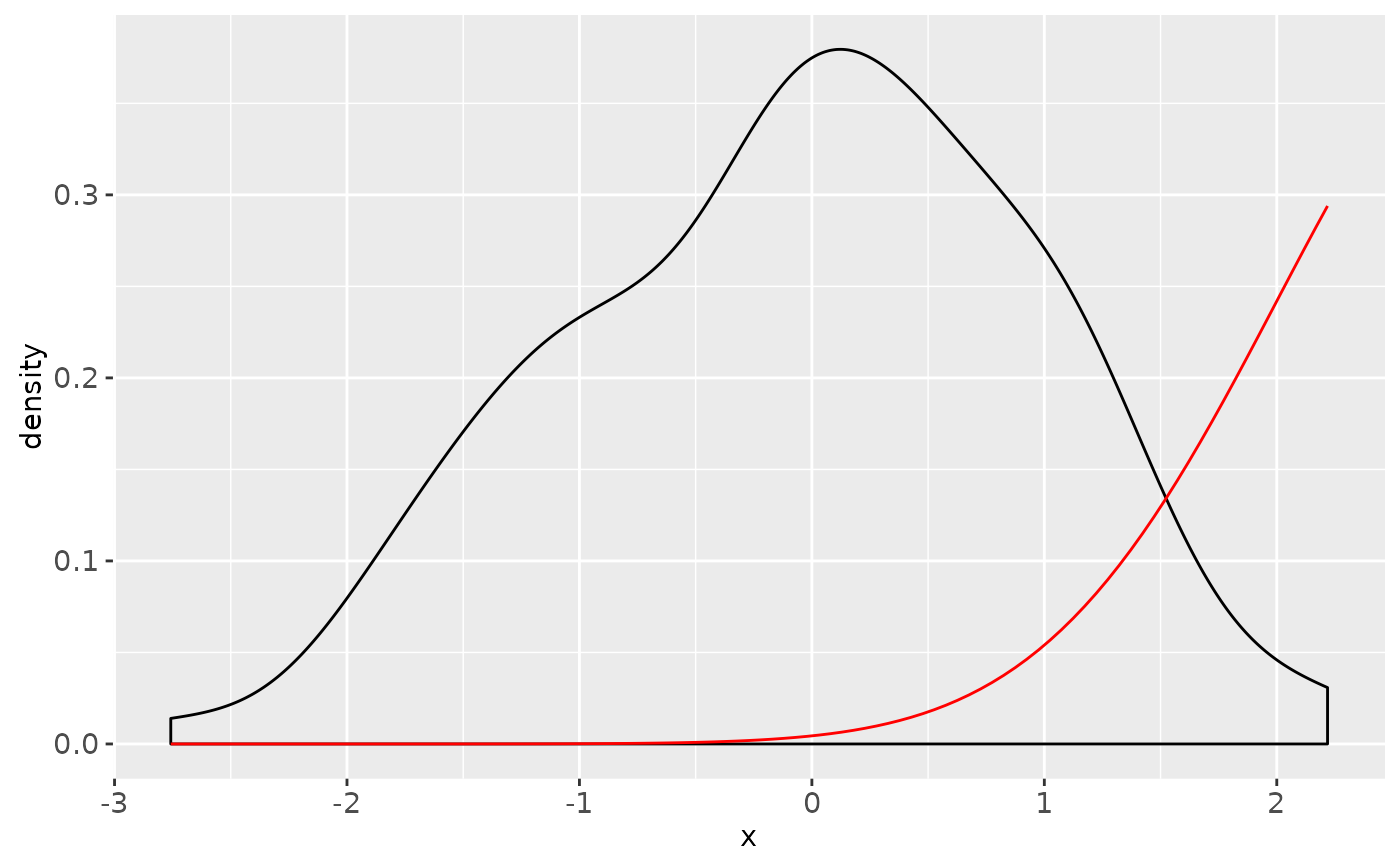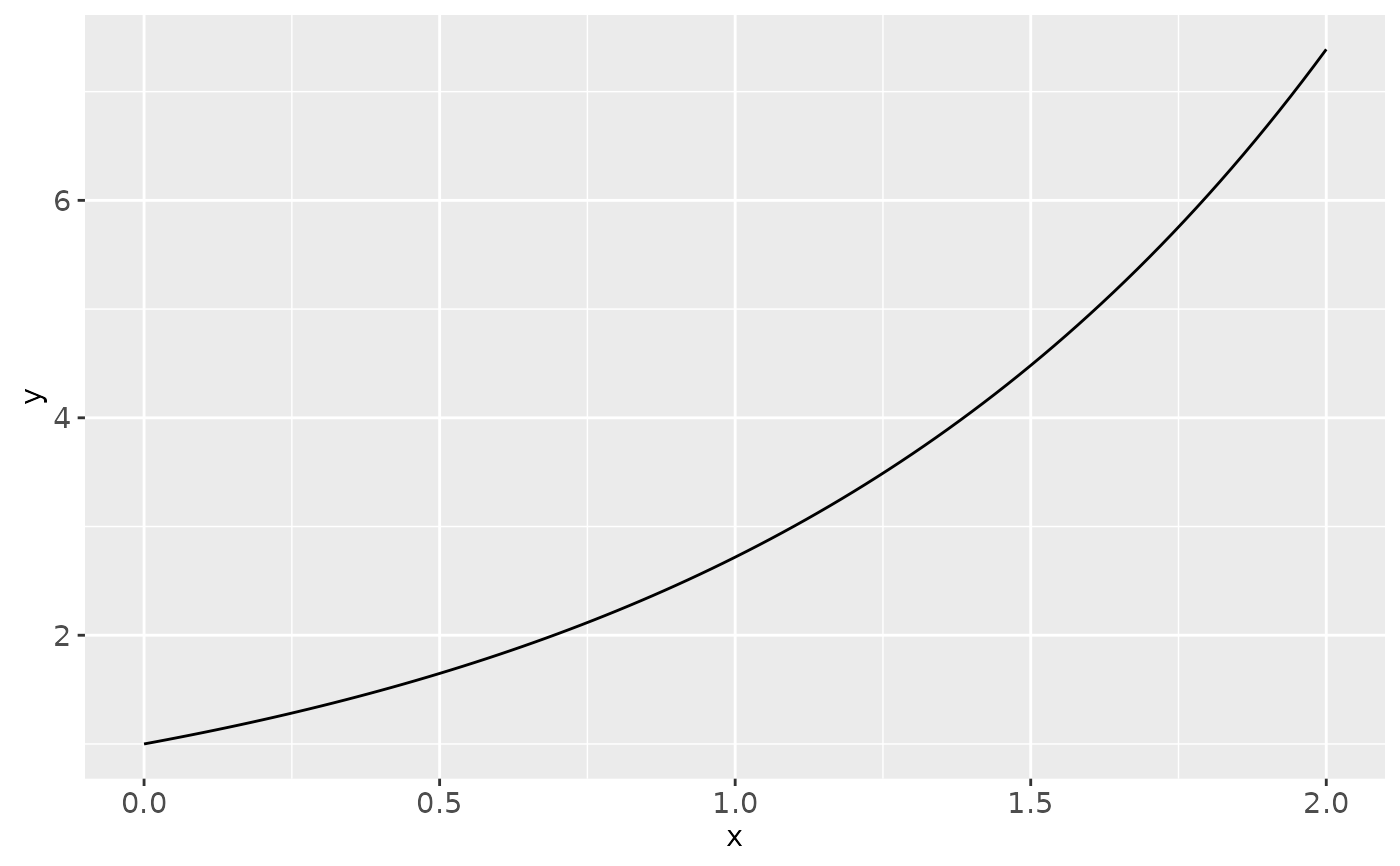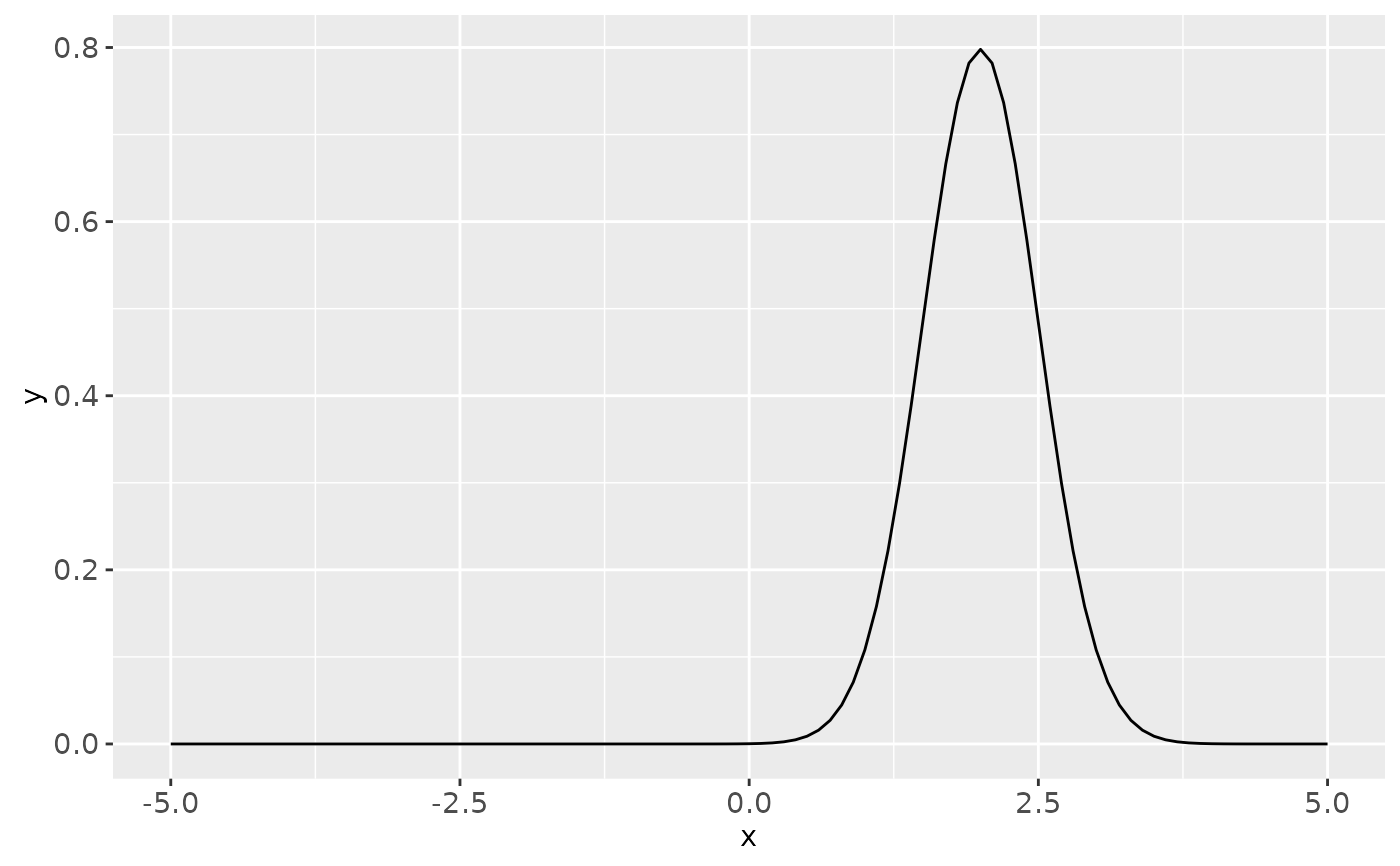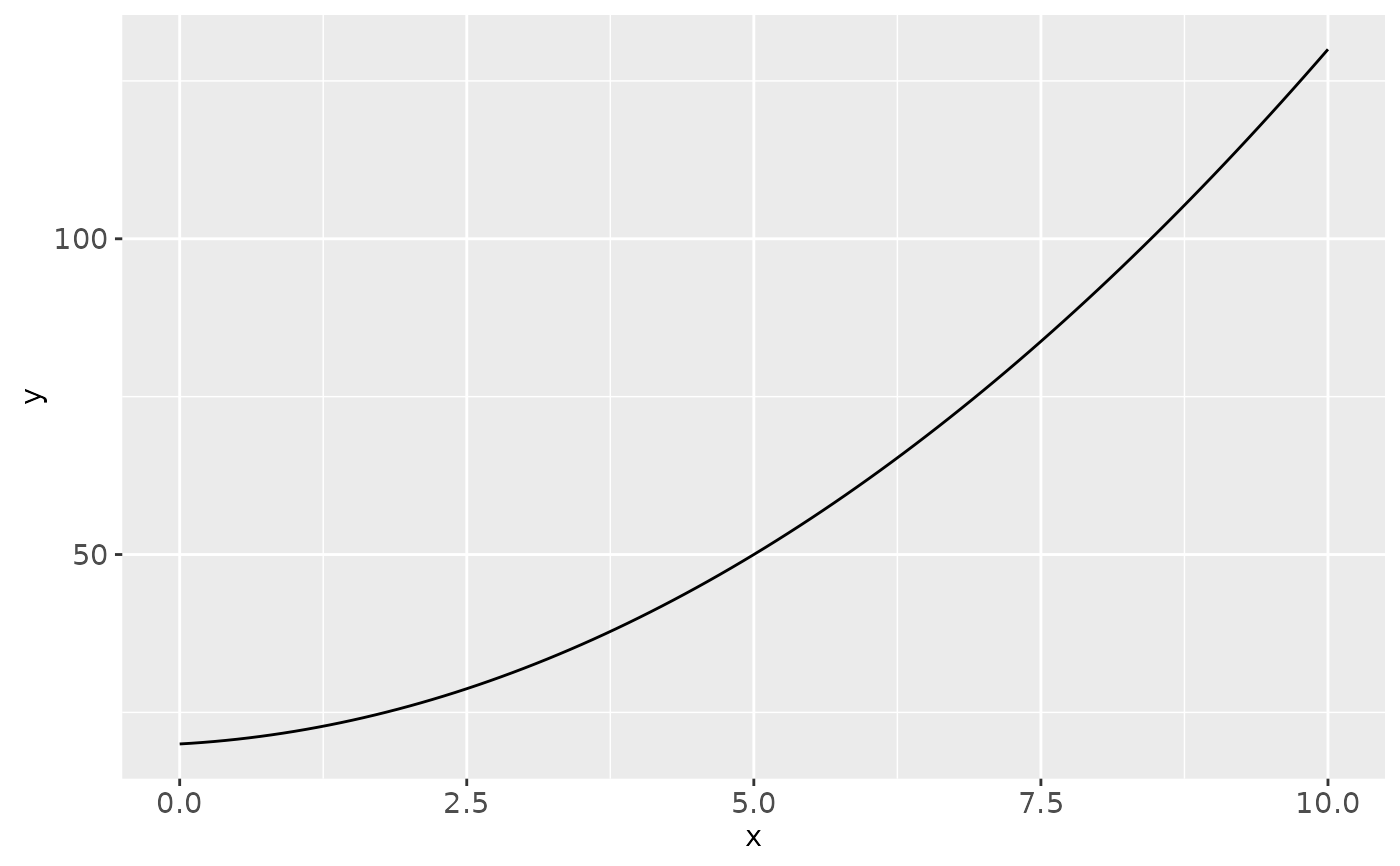Superimpose a function.
Usage
stat_function(
mapping = NULL,
data = NULL,
geom = "path",
position = "identity",
...,
fun,
xlim = NULL,
n = 101,
args = list(),
na.rm = FALSE,
show.legend = NA,
inherit.aes = TRUE
)Arguments
- mapping
Set of aesthetic mappings created by
aesoraes_. If specified andinherit.aes = TRUE(the default), it is combined with the default mapping at the top level of the plot. You must supplymappingif there is no plot mapping.- data
The data to be displayed in this layer. There are three options:
If
NULL, the default, the data is inherited from the plot data as specified in the call toggplot.A
data.frame, or other object, will override the plot data. All objects will be fortified to produce a data frame. Seefortifyfor which variables will be created.A
functionwill be called with a single argument, the plot data. The return value must be adata.frame., and will be used as the layer data.- geom
The geometric object to use display the data
- position
Position adjustment, either as a string, or the result of a call to a position adjustment function.
- ...
other arguments passed on to
layer. These are often aesthetics, used to set an aesthetic to a fixed value, likecolor = "red"orsize = 3. They may also be parameters to the paired geom/stat.- fun
function to use
- xlim
Optionally, restrict the range of the function to this range.
- n
number of points to interpolate along
- args
list of additional arguments to pass to
fun- na.rm
If
FALSE(the default), removes missing values with a warning. IfTRUEsilently removes missing values.- show.legend
logical. Should this layer be included in the legends?
NA, the default, includes if any aesthetics are mapped.FALSEnever includes, andTRUEalways includes.- inherit.aes
If
FALSE, overrides the default aesthetics, rather than combining with them. This is most useful for helper functions that define both data and aesthetics and shouldn't inherit behaviour from the default plot specification, e.g.borders.
Examples
set.seed(1492)
df <- data.frame(
x = rnorm(100)
)
x <- df$x
base <- ggplot(df, aes(x)) + geom_density()
base + stat_function(fun = dnorm, colour = "red")
 base + stat_function(fun = dnorm, colour = "red", args = list(mean = 3))
base + stat_function(fun = dnorm, colour = "red", args = list(mean = 3))
 # Plot functions without data
# Examples adapted from Kohske Takahashi
# Specify range of x-axis
ggplot(data.frame(x = c(0, 2)), aes(x)) +
stat_function(fun = exp, geom = "line")
# Plot functions without data
# Examples adapted from Kohske Takahashi
# Specify range of x-axis
ggplot(data.frame(x = c(0, 2)), aes(x)) +
stat_function(fun = exp, geom = "line")
 # Plot a normal curve
ggplot(data.frame(x = c(-5, 5)), aes(x)) + stat_function(fun = dnorm)
# Plot a normal curve
ggplot(data.frame(x = c(-5, 5)), aes(x)) + stat_function(fun = dnorm)
 # To specify a different mean or sd, use the args parameter to supply new values
ggplot(data.frame(x = c(-5, 5)), aes(x)) +
stat_function(fun = dnorm, args = list(mean = 2, sd = .5))
# To specify a different mean or sd, use the args parameter to supply new values
ggplot(data.frame(x = c(-5, 5)), aes(x)) +
stat_function(fun = dnorm, args = list(mean = 2, sd = .5))
 # Two functions on the same plot
f <- ggplot(data.frame(x = c(0, 10)), aes(x))
f + stat_function(fun = sin, colour = "red") +
stat_function(fun = cos, colour = "blue")
# Two functions on the same plot
f <- ggplot(data.frame(x = c(0, 10)), aes(x))
f + stat_function(fun = sin, colour = "red") +
stat_function(fun = cos, colour = "blue")
 # Using a custom function
test <- function(x) {x ^ 2 + x + 20}
f + stat_function(fun = test)
# Using a custom function
test <- function(x) {x ^ 2 + x + 20}
f + stat_function(fun = test)
